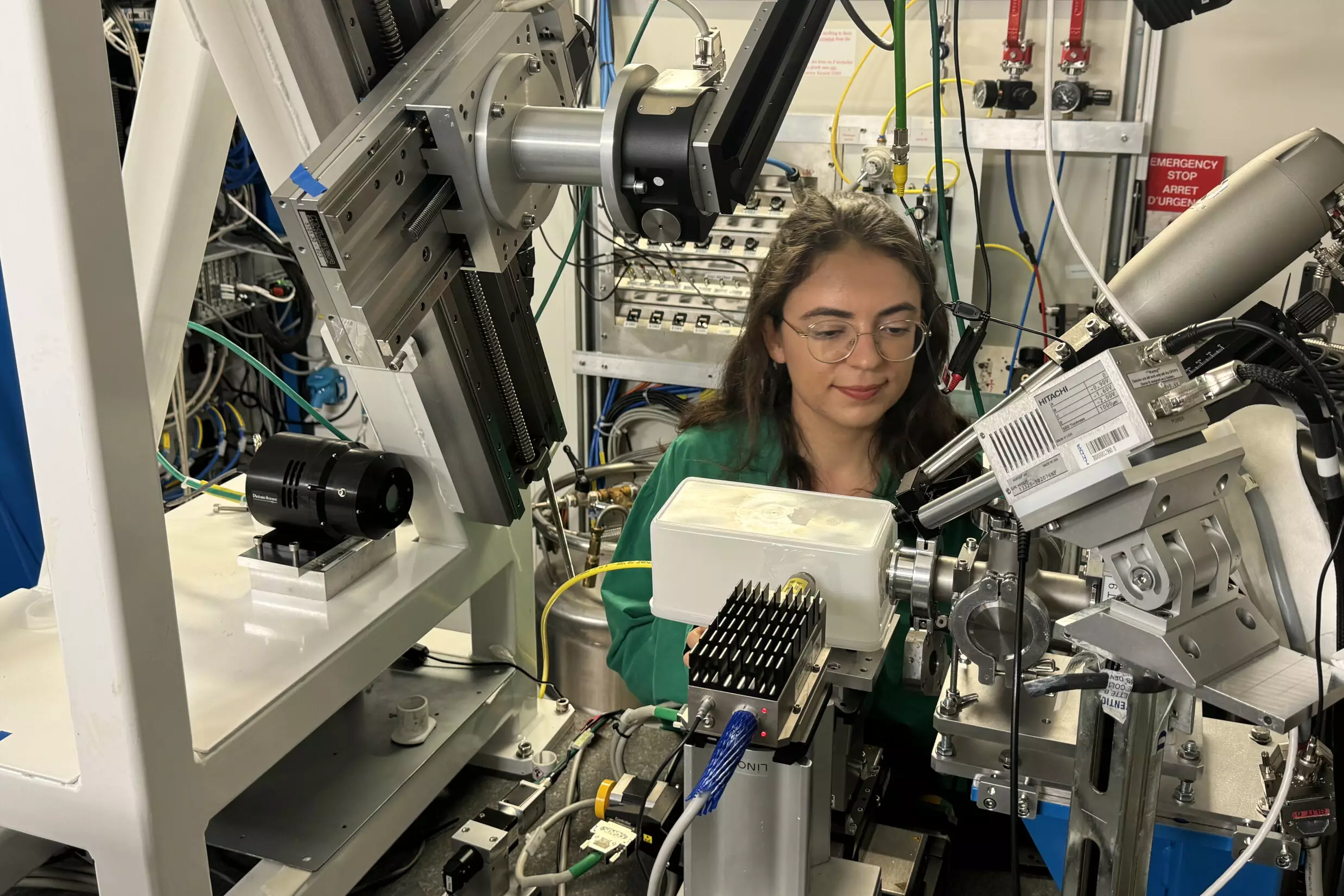The element uranium, known largely for its role in nuclear energy and weaponry, is a paradox. Beyond its infamous radioactivity, it possesses intricate chemical properties that have long captivated scientists. Recently, an international team has harnessed the capabilities of synchrotron light to delve deeper into the realm of low-valent uranium compounds. Their groundbreaking research, published in the journal *Nature Communications*, offers fresh insights into the element’s unique behavior and bonding characteristics.
Uranium, classified among the actinides in the periodic table, is distinguished by its complex electron configurations that allow it to exist in various oxidation states. These oxidation states are pivotal for understanding its chemical behavior and reactivity. Low-valent uranium, in particular, possesses more electrons tucked away in its inner shells than more prevalent forms of the element. This distinction is crucial since it influences how uranium bonds with other elements. The focus of this research was to scrutinize uranium’s 5f electrons, which, despite residing in the inner shell, have a significant impact on its chemical interactions.
Clara Silva, a Ph.D. student associated with the Helmholtz-Zentrum Dresden-Rossendorf (HZDR), emphasizes the importance of these 5f electrons. “Despite being buried deep within the atom, these electrons are fundamental to understanding uranium’s chemistry and bonding behavior,” she remarked. Their research marks a critical exploration into compounds that are often ignored due to their instability compared to more common uranium oxides.
The research team employed advanced techniques such as resonant inelastic X-ray scattering (RIXS), which allows scientists to bombard samples with X-rays and examine the energy changes that occur as these rays scatter. This methodology yields crucial information about the electronic configurations of materials, providing a window into the elusive behavior of uranium’s 5f electrons.
In conjunction with RIXS, the team utilized high-resolution fluorescence detection through a method known as HERFD-XANES to enhance their findings. This combination of techniques enabled the researchers to achieve a level of precision in determining the oxidation states of uranium that had never been attained before. Remarkably, this study successfully identified the tri-valent state of uranium, known as U(III), confirming how uranium interacts with elements like fluorine and chlorine.
Challenges Faced in Researching Low-Valent Uranium
Conducting research on low-valent uranium is fraught with difficulties. These compounds are notoriously unstable and reactive, necessitating an environment carefully regulated to avoid contaminating conditions. The researchers carried out their experiments under anoxic conditions—completely devoid of oxygen—and at cryogenic temperatures to ensure the stability of samples throughout the study.
The data derived from these experiments was complex, prompting the use of sophisticated theoretical models that accurately depict the electronic structure and bonding properties of uranium. Silva noted, “We discovered a startling sensitivity of the 5f electrons to their local surroundings. This revelation is a game changer and prompts a reevaluation of existing theories in actinide chemistry.”
Implications for Nuclear Science and Environmental Safety
Beyond academic curiosity, the practical implications of this research are profound. The deeper understanding of low-valent uranium compounds could enhance strategies for radiation protection and improve the management of radioactive waste. Notably, these low-valent compounds reveal lower solubility which could help to mitigate environmental contamination issues.
The ramifications of understanding these interactions extend to multiple scientific realms. Knowledge gained from this research may facilitate advancements not only in nuclear science but also in environmental chemistry. By refining theoretical models to accurately predict behaviors of such complex elements, scientists can pave the way forward for future innovations.
The collaborative efforts of the scientists at the European Synchrotron Radiation Facility demonstrate the power of advanced techniques in unraveling the complexities of atomic behavior. As we deepen our comprehension of the unique properties of low-valent uranium, new avenues for research open up, promising advancements in both theoretical understanding and practical applications. This exploration not only brings clarity to uranium’s intricate bonding characteristics but also sets the stage for future breakthroughs that could significantly enhance the safety and efficacy of nuclear technologies in our ever-evolving scientific landscape.

